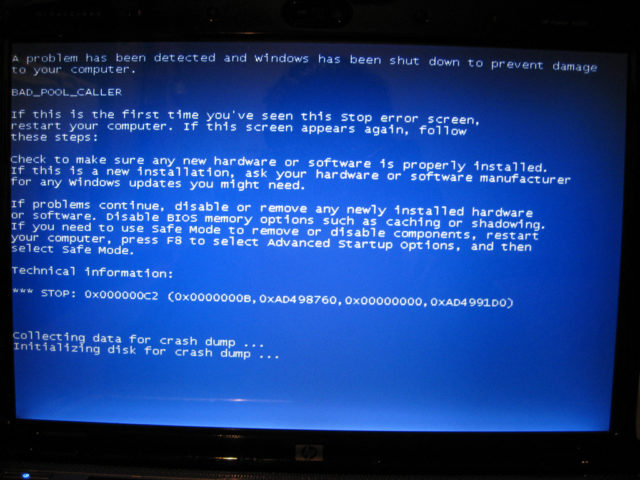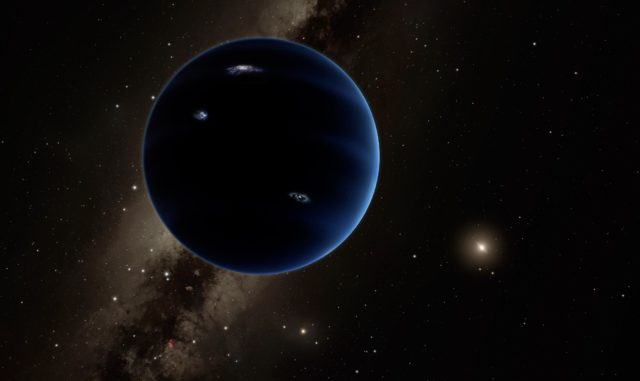
This illustration shows the possible surface of TRAPPIST-1f, one of the newly discovered planets in the TRAPPIST-1 system. (NASA/JPL-Caltech)
7 Earth-Like Planets Found Orbiting Single Star
Scientists using NASA’s Spitzer Space Telescope have found the largest group of earth-like planets circling a single star.
A total of seven planets were observed orbiting TRAPPIST-1, a star located only about 40 light years from Earth.
The discovery also set a record for the number of planets that were found in a star’s habitable zone.
The habitable zone is an area surrounding a star where any orbiting planets could have liquid water on its surface, something that’s essential to support life.
“The discovery gives us a hint that finding a second Earth is not just a matter of ‘if’, but when,” says NASA’s Thomas Zurbuchen speaking at a press conference announcing the discovery.
The head of the space agency’s Science Mission Directorate also says scientists believe that around every star there could one, seven or more planets that could have a chance at becoming a habitable ecosystem.
Good Sleep = Less Stress – Less Stress = Good Sleep
According to the US National Institutes of Health, getting enough quality sleep can help protect your mental and physical health, as well as your safety and quality of life.
Not getting a good night’s sleep on a regular basis can put you at risk for medical conditions such as obesity, heart disease and diabetes.
Penn State researchers have found in two studies that there’s a cycle of how the caliber and amount of sleep is affected by and can affect daily stressors.
Penn State’s Orfeu Buxton, senior author of the two studies, says having a day that’s less stressful and conflict filled day is followed by a night where it’s easier to get to sleep. And in turn having a good night of sleep is more likely to be followed by a day with less stress and conflict.
He suggests that sleep is a powerful source of resilience to help get through difficult times.

Computer monitor displaying the dreaded ‘Blue Screen of Death’ after malfunction.
(Michael Ocampo via Flickr/Creative Commons)
Cosmic Rays May Crash Your Electronic Gear
You’ve been on your computer for a couple of hours working on an important paper and then boom – your computer crashes leaving you with that dreaded ‘blue screen of death’ on your monitor.
You may think this is due to a poorly written program or some other computer glitch, but new research suggests the problem may originate in deep space.
Bharat Bhuva from Vanderbilt University, says in a press release that in many cases, problems with our electronic devices may be caused by streams of electrically charged particles produced by cosmic rays.
While millions of these particles strike your body every second, they have no known harmful effects on living creatures.
However, Bhuva says a portion of these particles can carry enough energy to affect microelectronic circuitry.
He says fortunately makers of critical electronic devices such those used in aviation and medicine are all aware of this problem and working on measures to address it.

This artistic rendering shows the distant view from Planet Nine back towards the sun. The planet is thought to be gaseous, similar to Uranus and Neptune. Hypothetical lightning lights up the night side. (Caltech/R. Hurt (IPAC))
NASA Challenges Citizen Scientists to Find Planet 9
Back in January 2016, two astronomers at the California Institute of Technology (Caltech) provided evidence of a giant planet traveling in an odd, drawn-out orbit in the far reaches of the solar system.
The evidence for its existence is based on the gravitational influence Planet 9 seems to have on several minor planet sized objects beyond the orbit of the solar system’s farthest planet Neptune.
Astronomers around the world have been actively scanning the skies since the discovery was announced, hoping to spot the humongous planet.
NASA is now seeking the help of citizen scientists to locate Planet 9 with the launch of a new website – Backyard Worlds: Planet 9.
The website features brief movies made from images captured by NASA’s Wide-field Infrared Survey Explorer or WISE mission.
The address for the new NASA website is www.backyardworlds.org
























Wow! What an interesting article. Thanks for sharing!